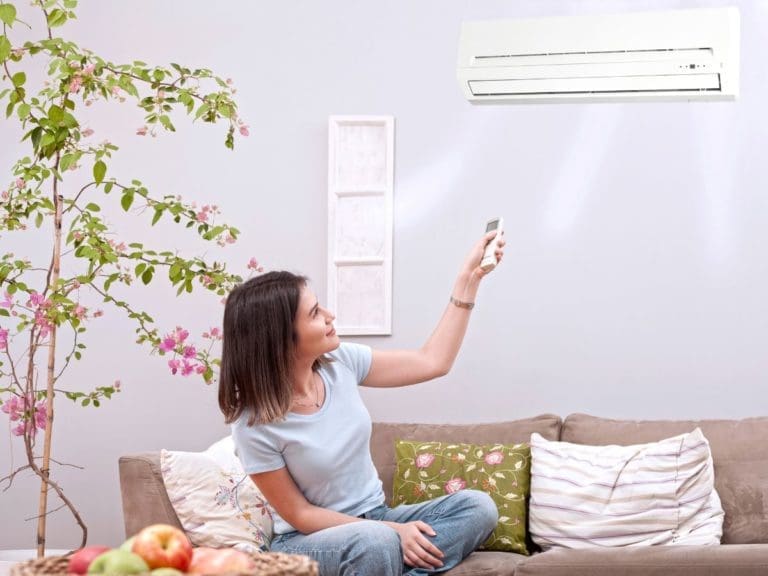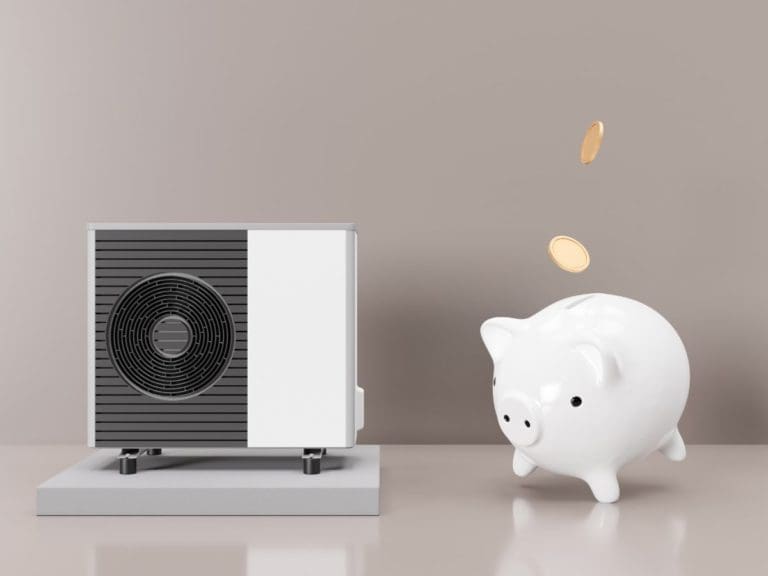Ducted Air Conditioning vs Split System Pros and Cons
This article offers some tips on the best temperature-regulating systems for your needs. Keep reading for the pros and cons of ducted vs split system air conditioning.
Living in a city with four seasons in one day might require you to control the temperate around you as best you can. If you’re worried about the swift weather changes and are looking for a solution, let’s discuss the best options for your needs.
Ducted and split systems are the two most common ways to control the temperature of a building. This article reviews the pros and cons of these systems and discusses which is best for your given circumstance.
Finding the best system for you and your budget will play an essential role in your choice. Continue reading to avoid making an impulsive decision that could cost you in the long term!
What Is Ducted vs Split System Air Conditioning?


How Ducted Air Conditioners Work
A ducted air conditioning system uses fans to pump air into ducts found in the ceiling or floor of a structure. With this reverse cycle, the air is cooled or heated (from the outside). This is transmitted to each connected room by a small vent in the wall while either cooling or heating it.
Ducted air conditioners use a central control system and can cool an entire home or building. Some versions come with zone control so that various rooms or areas of the house can be individually heated or cooled.


How Split System Air Conditioners Work
Split system air conditioning works by circulating heated or cooled air throughout a house using an outside unit connected to one or more internal units. A split system air conditioner also uses two primary units to function.
An external condenser pulls air from the outside and modifies its temperature. At the same time, the head unit, mounted to an interior wall, pumps out the desired temperate.
Critical Differences Between Ducted and Split System Air Conditioning


There are seven essential factors to consider when comparing the two air conditioning systems. These include the following:
- Installation
- Recurring costs
- Effectiveness
- Noise
- Location suitability
- Servicing
- Repairs
Installation
Ducted air conditioning work requires a professional installation and often has higher installation costs. Installing ducts throughout the house and vents in individual rooms that need to be cooled makes them more expensive to install and maintain. Depending on the building’s size, a complete set-up often starts at around $6,000.
When installing split systems, they need to be within a specific distance of one another. This is because of the tubing that connects the two units. This restriction becomes problematic when installing units in apartments or taller buildings.
Split systems can be built room by room if you need to cover the costs over a more extended period, making it less expensive to install. Depending on the unit capacity, these devices start around the $2,000–$3,000 range.
Recurring costs
One of the cons of ducted air conditioning is that it chills the entire house at once. If you only need to cool one room, zoning allows you to manually set which rooms you’d like to cool, allowing you to save on running costs.
On the other hand, split systems operate on a per-unit basis, resulting in lower operating expenses than a ducted system that works across the entire house.
With split systems, you can pick the rooms you want to heat or cool, which saves money on power and is better for the environment. Additionally, split systems allow customers to select units with higher energy efficiency ratings.
Effectiveness
Ducted air conditioners are excellent for cooling the entire house. The ducts ensure that each room is the same temperature, or in some recent versions, each zone can have a separate temperature set. Ducted systems are better suited for larger residences or commercial structures.
Split systems work well in little and single rooms. Cooling a larger space will require a larger 8kw unit and more energy. Ducted air conditioning works best for a consistent temperature throughout the house and cooling big areas.
Noise
The ducted system is discrete and quiet. Only the duct vents, quieter than split system air conditioners, are visible in each room.
The room that a split system unit is intended to cool must have a wall-mounted version of the unit. So it makes more noise than a ducted system. In a split system air conditioner, the outdoor unit makes greater noise than the indoor unit. However, this noise rises when several units are being used simultaneously.
Suitability
Some homes need more roof space to install ducted air conditioning, making installation unfeasible. Existing two-story homes may struggle with this system since it is hard to run ductwork downstairs.
In this situation, you might install Split Systems below and a smaller ducted air conditioner upstairs. Installing split systems requires adequate wall space, and both have exterior units connected to the inside unit by copper piping.
Servicing
While both systems can be affected by the amount of use and external variables, ducted air conditioners have a longer lifespan. Prior to the necessity for replacement of the key components, they endure between 10 and 15 years.
Split systems last 5 to 10 years before needing to replace certain parts, depending on the type of system installed. Proper maintenance and routine filter cleaning extend a system’s lifespan, while a neglected one is shortened. That said, whichever system you decide on, ensure regular service and cleaning of filters to increase the life span.
Repairs
Having your entire ducted system malfunction can set you back. Not only will all of your rooms be affected, but the logistics of fixing a system that is designed to be hidden might be a real pain.
Split system units have an advantage when it comes to repairs. This is because replacement parts are cheaper than those for ducted systems. If one split system unit malfunctions, other units in your home will still function. You’ll only have to pay for one unit.
Making The Decision On The Right Air Conditioner For You
As a wise homeowner, you want to invest in air conditioning systems that will increase the value of your home. And you want to do this while maximising energy efficiency and environmental consciousness. It should fit your property’s floor plan and orientation with its customisation.
A ducted air conditioning unit is the best option for cooling your entire home, and if you’d like to choose comfort and convenience over cost. On the other hand, split systems are the best option if you only need to chill in a single room or a small area.
However, the best system for you will differ based on your unique needs, requirements, and financial situation. The best air conditioning solution depends on the sort of home you have, your budget, and your individual air conditioning needs.
We’ve Got You Covered
With over 20 years of experience, Oz Air Group provides heating and cooling installations, repairs, and electrical servicing. If you’re in Melbourne or the surrounding suburbs, we offer excellent prices and pride ourselves on quality work and fantastic customer service.
So if you are looking at regulating your temperature, contact us. We can help you find a solution that fits your budget and ensure you save money on heating and cooling.



